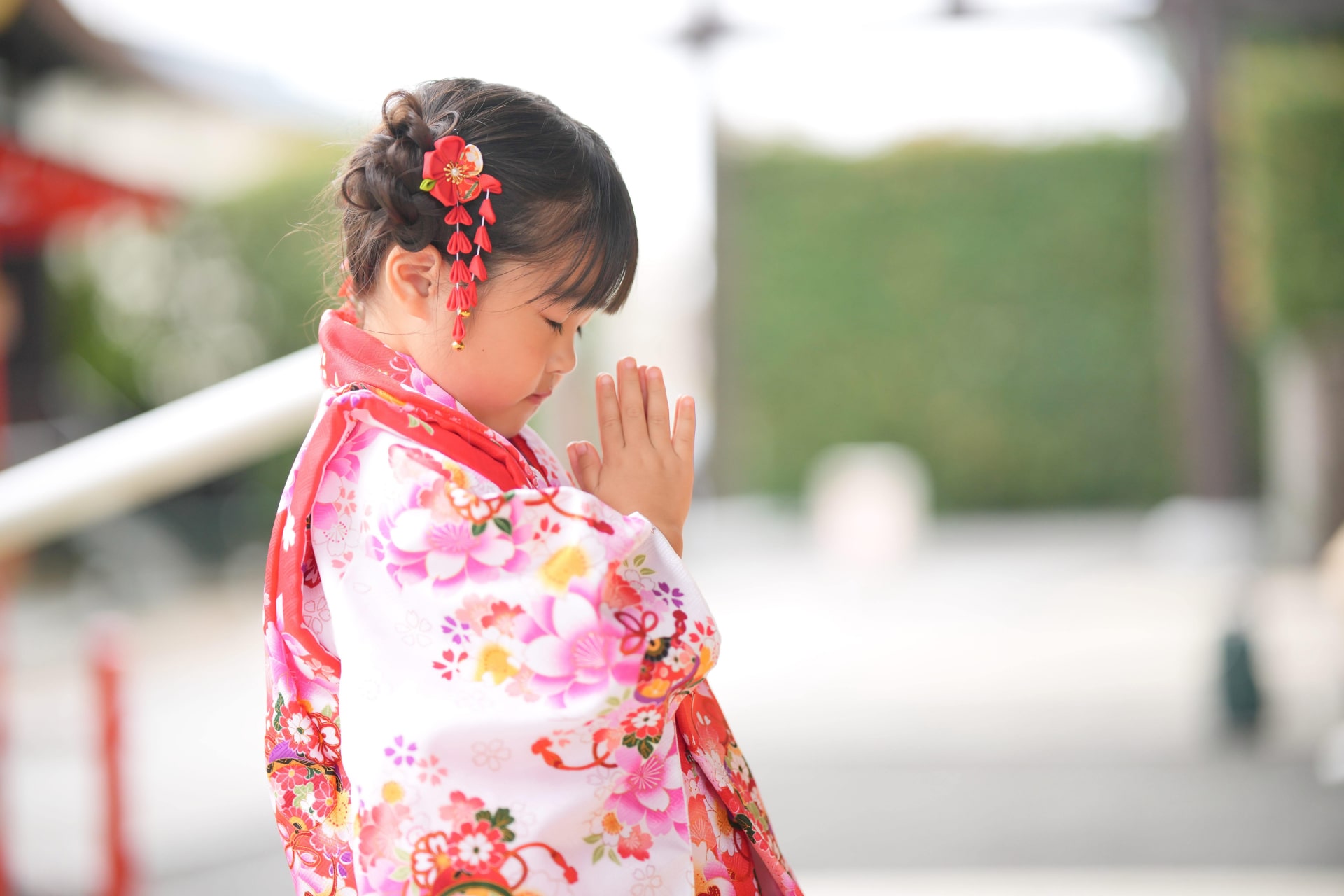What Is Gassho? The Meaning and Practice of a Timeless Gesture

When you place your palms together in front of your heart and bow slightly, you are practicing Gassho (合掌). In Japan, this gesture is far more than a greeting — it is a symbol of respect, gratitude, and spiritual connection. Rooted in Buddhism and seen in temples, meditation halls, and even modern wellness practices, Gassho carries centuries of meaning.
It is this depth and timelessness that inspired the name of our meditation and mindfulness app: Gassho.
The Origin of Gassho in Buddhism
The word “Gassho” literally means “palms pressed together.” Its roots trace back to ancient India, where the anjali mudra gesture was used as a sign of reverence. As Buddhism spread through Asia, the practice became deeply embedded in Japan.
In Japanese Buddhism, Gassho symbolizes the unity of opposites: self and other, body and mind, the individual and the universe. Pressing the palms together reflects harmony and the dissolution of duality.
It’s also worth noting that Gassho is not performed in exactly the same way across all Buddhist traditions. For example, in Shingon Buddhism, the style of Gassho can differ: the palms may be held slightly apart at the base, or the gesture may be combined with mudras and mantra recitation, depending on the ritual. These subtle differences reflect the diversity of Buddhist practice, while keeping the underlying meaning of reverence and connection intact. This richness — one gesture, many nuances — is something we want our app to honor as well.
Gassho in Daily Practice
In temples: Visitors to Buddhist temples in Japan often begin and end prayers with Gassho. It is a silent acknowledgment of the teachings (Dharma), the community (Sangha), and the Buddha.
In meditation: Many Zen practitioners begin meditation by sitting quietly in Gassho. It’s a way of centering the mind and bringing attention into the present moment. Reiki healing traditions also teach Gassho meditation, where practitioners sit with hands together, focusing on the breath and cultivating gratitude.
In everyday life: Outside religious settings, Gassho is used in moments of thanks — before meals (“itadakimasu”), after meals, or when expressing deep respect. Even in modern Japan, it continues to carry meaning beyond words.
The Spiritual Symbolism of Gassho
- Respect: Acknowledging the worth of another being.
- Unity: Symbolizing the merging of self and other.
- Gratitude: Offering thanks for life, food, teachings, or kindness.
- Mindfulness: Returning to the present through body and gesture.
What looks like a small gesture is actually a physical expression of profound inner values.
A Personal Perspective from the Gassho Team
Our team today is made up of members from Japan, the United States, and India. This mix of cultural perspectives gives us a unique view on meditation and spirituality.
From the Japanese side, Gassho is not something we do lightly. We might join our hands in Gassho to honor the dead at a grave or altar. We might do Gassho before prayer at a temple, when we want to spiritually align ourselves with our actions. For many of us, it is a gesture tied to moments of sincerity, reverence, and readiness.
From the Indian perspective, Gassho is closely related to anjali mudra, a gesture of respect and greeting, still widely practiced in everyday life as “namaste.” From the American side, the gesture often resonates as a universal symbol of peace and mindfulness.
Together, we see Gassho as something that unites traditions — a simple act that carries different shades of meaning, but always with respect at its core. This cultural weight is one of the reasons we felt so strongly about naming our app Gassho.
Why We Named Our App Gassho
When we created our meditation and mindfulness app, we wanted it to be more than just another relaxation tool. Our goal was to design a space that carries spiritual depth — where each guide or meditation feels connected to timeless tradition. That’s why we chose the name Gassho.
For us, Gassho represents:
- Connection — palms pressed together, symbolizing unity of self and world.
- Guidance — a reminder to bow inwardly and follow a spiritual path.
- Gratitude — grounding meditation in respect and thankfulness.
With this name, we hope that every time someone opens the app, they feel the same sense of reverence and calm that the gesture of Gassho embodies.
Gassho in Modern Contexts
Today, Gassho has moved beyond temples. Wellness communities, yoga teachers, and mindfulness practitioners worldwide adopt the gesture to express peace and grounding.
Our app Gassho is an extension of this movement — bringing the spirit of the gesture into the digital age, so anyone, anywhere, can practice meditation with a sense of authenticity, spirituality, and connection.
How to Practice Gassho Yourself
- Sit or stand comfortably.
- Place your palms together in front of your chest.
- Relax your shoulders and spine.
- Breathe naturally.
- Bow your head slightly as you exhale.
Use this gesture to begin meditation, express gratitude before meals, or simply as a grounding moment during a busy day.
A Note from the Gassho Team
As of the writing of this article, our team consists of Japanese, Indian, and American members. Each of us brings our cultural background into the project, but we share the same belief: Gassho is not just a gesture — it is a reminder to live with sincerity, reverence, and gratitude.
When you open our app, our hope is that you feel the same quiet strength that comes when you place your palms together: ready, grounded, and connected.
Conclusion
Gassho is more than a bow. It is a timeless expression of unity, gratitude, and respect that bridges cultures and centuries.
By naming our app Gassho, we wanted to honor this heritage while offering meditation guides that serve as spiritual companions, not just wellness tools. For us as a multicultural team — rooted in Japanese traditions, connected to Indian origins, and shaped by American openness — Gassho is a reminder to live, create, and meditate with sincerity.
In a world that often feels divided, this small gesture carries a big message: we are all connected.
Frequently Asked Questions
FAQ 1: What does Gassho mean in Buddhism?
Answer: In Buddhism, Gassho means more than just placing your palms together — the left hand represents all sentient beings, while the right hand represents the Buddha. When the two hands meet, they symbolize the unity of Buddha and all beings, wisdom and compassion, self and other.
Real Results: In Shingon and Zen traditions, practitioners begin rituals with Gassho to remind themselves that enlightenment and daily life are not separate, but joined as one.
Takeaway: Gassho expresses the unity of Buddha and all beings, making it a profound symbol of non-duality in Buddhism
FAQ 2: How do you practice Gassho meditation?
Answer: To practice Gassho meditation, sit comfortably and bring your palms together at your chest. Breathe naturally, relax your shoulders, and bow slightly as you exhale.
Real Results: Reiki practitioners report Gassho meditation increases focus and gratitude after just a few sessions.
Takeaway: Gassho meditation is a simple, powerful way to center your mind
FAQ 3: Is Gassho the same as namaste?
Answer: Gassho and namaste are related but culturally distinct gestures. Both come from anjali mudra in India, but Gassho is deeply tied to Japanese Buddhism, while namaste is a Hindu greeting.
Real Results: Many yoga and meditation teachers integrate both, recognizing their shared roots.
Takeaway: Gassho and namaste share origins but carry unique cultural meanings
FAQ 4: When do Japanese people use Gassho?
Answer: In Japan, Gassho is often used in moments of reverence such as honoring the dead, praying at temples, and giving thanks before meals.
Real Results: Surveys show that over 70% of Japanese households still use Gassho before Buddhist altars.
Takeaway: Gassho is a gesture for gratitude and spiritual alignment in Japanese life
FAQ 5: Why did you name your app Gassho?
Answer: We named our app Gassho to reflect its spiritual depth and cultural roots. For our multicultural team, Gassho symbolizes unity, gratitude, and respect — the same values we want users to feel in meditation.
Real Results: Early adopters reported that the app name itself gave them a sense of connection to Japanese mindfulness traditions.
Takeaway: The Gassho app embodies the spirit of reverence and unity in meditation
FAQ 6: Is there a benefit to doing Gassho?
Answer: Yes, doing Gassho brings both spiritual and practical benefits — it calms the mind, centers the body, and fosters gratitude. Pressing your palms together slows your breathing, lowers tension in the shoulders, and creates balance.
Real Results: Research shows that simple gestures of hand-to-hand contact activate the parasympathetic nervous system, reducing stress and enhancing focus. Many practitioners report that beginning meditation with Gassho helps them feel more grounded.
Takeaway: Gassho benefits both body and mind by reducing stress, deepening focus, and reinforcing gratitude
FAQ 7: Do you meditate and Gassho at the same time?
Answer: Yes, Gassho can be combined with meditation, especially at the beginning and end of a session. In Zen and Reiki traditions, practitioners often start meditation in Gassho as a bridge between daily life and the meditative state.
Real Results: In Reiki “Gassho meditation,” people report greater focus and emotional calm within minutes. Zen monks describe beginning meditation with Gassho as embodying respect for the practice.
Takeaway: Meditating with Gassho helps you enter practice with respect and focus, grounding the session from the very first breath
FAQ 8: Does Gassho relate in any way to Gassho-style (Gassho-zukuri) buildings?
Answer: Yes, Gassho-zukuri houses are named after the gesture because their steep thatched roofs resemble hands joined in prayer.
Real Results: UNESCO recognized Shirakawa-go and Gokayama as World Heritage Sites in 1995, partly because Gassho-zukuri homes preserve centuries-old Japanese culture.
Takeaway: This connection shows how deeply Gassho is woven into Japanese culture — from sacred temple practices to traditional architecture
FAQ 9: How do you pronounce Gassho?
Answer: Gassho is pronounced “GAH-sho.” In Japanese, the double “s” means you hold the “s” sound slightly longer, so it sounds like gah-sshoh.
Real Results: Many English speakers first say “gas-show,” but with practice, “gah-sshoh” becomes natural and closer to the Japanese pronunciation.
Takeaway: Say “gah-sshoh,” with a soft “a” and a longer “s,” to pronounce Gassho correctly
FAQ 10: Don’t people in Thailand do Gassho as a greeting?
Answer: Yes, in Thailand a similar gesture called the “wai” is used, but it is culturally distinct from Japanese Gassho. The wai is an everyday greeting, while Gassho is reserved for reverence and prayer.
Real Results: Travelers note that the wai is used as frequently as a handshake in the West, while Gassho is solemn, often seen at temples, funerals, or before meals.
Takeaway: Thailand’s wai and Japan’s Gassho share roots but have very different cultural meanings
FAQ 11: Why does the posture and aura of Gassho feel so powerful?
Answer: Because Gassho unites body, mind, and intention, it naturally creates an aura of calm respect. The posture conveys humility, sincerity, and readiness.
Real Results: Practitioners say that seeing someone in Gassho makes a room feel quieter. In temples, groups performing Gassho together create an atmosphere of reverence.
Takeaway: The power of Gassho lies not only in the gesture itself, but in the calm aura it radiates to others
FAQ 12: Is Gassho in Shinto the same as in Buddhism?
Answer: No, Gassho looks similar in both traditions, but the meaning differs. In Buddhism, Gassho symbolizes the union of Buddha and beings, wisdom and compassion. In Shinto, it comes after bows and claps, expressing respect to the kami (deities).
Real Results: Many Japanese go to Shinto shrines for life events and Buddhist temples for funerals, showing how the two traditions coexist. Gassho takes on slightly different meanings depending on the setting.
Takeaway: In Buddhism, Gassho embodies spiritual unity, while in Shinto it expresses respect for the kami — reflecting Japan’s unique blend of traditions.


